THE RACING YEAR IN WORDS.
 Monday, December 12, 2016 at 09:26AM
Monday, December 12, 2016 at 09:26AM By Peter M. DeLorenzo
Detroit. It was another roller-coaster year in the world of racing. F1 was, well F1; IMSA struggled mightily with The Future but offered the finest, most competitive racing in the world in its GTLM class; NASCAR was its usual seething cauldron of bureaucracy meted out in a go-along-to-get-along dance that grew old easily a decade ago; IndyCar continued to be locked in a time warp of its own making; and GRC offered the most scintillating racing of the year. I had a lot of thoughts about racing along the way, per usual, and here are a few of the highlights from my columns this year. Hopefully, it will give you something to think about before the new season begins.
As for racing in general, the usual scenarios will unfurl. Manufacturers on the winning side will gloat. And manufacturers who aren't winning will whine. The same for the drivers, because, let's face it, drivers aren't happy unless they're winning. Bernie will cajole, strong-arm and maneuver, because that's what Bernie does. And the Other Forces in F1 - orchestrated by Marchionne - will make lives miserable just because they can. The powers that be at IndyCar will crow about an uptick of a tenth of a percentage point in the TV ratings, because well, that's what they always do. IMSA will present its usual highs and lows, and NASCAR will suck the air out of the media landscape. And so it goes. As for the racing enthusiasts, without whom none of this would be possible, they will have to pick and choose their way around the calendar, because no one racing series has it together enough to present a first-rate on-track product throughout an entire season. ("WHINERS, LAWYERS AND OH BY THE WAY, RACING." January 6, 2016)
In my twitter feed over the weekend I talked about the looming "Battle for the Ages" in the GTLM class in the 2016 IMSA WeatherTech SportsCar Championship. Let's forget about the fact for the moment that this continent deserves an all-GT series and instead let's dwell on the reality of what is at hand, which is a monumental battle for superiority and bragging rights among the world's elite auto manufacturers. The Corvette vs. Ford vs. BMW vs. Porsche vs. Ferrari battle will intensify what is already considered to be the finest road racing in the world. And we should all be grateful, even with the "what ifs" and "what could be" that comes with it. As I reminded readers last week, nothing is perfect in racing. The endless politics and the never-ending Balance of Performance bullshit always seem to try mightily to derail great racing, so we're left with fleeting moments over the course of the season that play out in bursts of creativity and brilliance, and keep us coming back for more. Here's hoping for many of those moments in 2016, and try to savor and enjoy what we have, because you never know when the powers that be will conspire to mess it all up. ("THE BATTLE FOR THE AGES." - 2/18)
What you will see at Daytona this weekend in the Daytona 24 Hour race (Rolex 24) is the culmination of five years of due diligence, research, hard work and yes, more than a little hand-wringing, as Ford enters the most hotly-contested category in all of modern motorsport - the 2016 IMSA WeatherTech SportsCar Championship's GTLM class - with its brand-new Ford GT racer. That the Ford GT racing program exists to showcase its brand-spanking-new, limited-production, Ford GT production supercar is a given. But the racing program also exists to develop future superstar engineers, designers, aerodynamicists and electronics experts who will power the company's technological expertise into the future. It's also a quintessential branding and image exercise for the Ford suite of advanced technology as defined by EcoBoost, and to remind those who are interested and for those who didn't already know, that the Ford Motor Company's history is rich with motorsports participation at the highest level - and winning. ("GREAT EXPECTATIONS." - 1/27)
There were no stinkin' "team orders," no artificial political arrangements, no dismally pre-programmed manufacturer priorities. No, it was just two pure road racers at the highest levels of the sport - who happened to be driving for the same team - going balls out for the GTLM class win in the Daytona 24 Hour race. The epic duel between Oliver Gavin (No. 4 Corvette Racing Corvette C7.R) and Antonio Garcia (No. 3 Corvette Racing Corvette C7.R) will go down in history as the closest class finish in the history of the race, with Gavin edging Garcia by just 0.034 seconds. ("ONE FOR THE AGES, PART II." - 2/3)
To say that the romance is gone in Formula 1 is to state the obvious. For the legions of fans who became enchanted with the movie Grand Prix when it made its debut back in the stone age (1966), the sport has lost its luster over the subsequent decades, like clockwork. Not that there haven't been spikes of interest in the sport over the ensuing years, but there's a reason that some of the most actively followed auto enthusiast sites on Twitter post images of F1 from the 50s, 60s, 70s and 80s. This will not be a wistful nostalgia screed about the "good ol' days" of Formula 1. And it won't be a detailed documentation of the sport's long, downward slide either, because the short story is simple: greed, along with manufacturer interest in skewing the results to justify their investment has cast a negative pall over the sport for years. Orchestrated by The Diminutive One, aka Bernard Ecclestone, the sport has been chasing the money for decades, bamboozling governments, track owners, and state and local city politicians to acquiesce to Bernie's wishes to the detriment of tradition, and in some cases, common sense. ("A MOST RADICAL SOLUTION FOR FORMULA 1." - 2/10)
Why? Because you simply can't put the technology "genie" back in the bottle. You can't put 60 years of aerodynamic development in racing aside and pretend that it just didn't exist. The same can be said for tire development, the emergence of radical new materials, new engine concepts, and all of the other myriad advancements in technology that are part and parcel of today's racing (we're not referring to NASCAR in this discussion because as we well know it simply exists its a world of its own making). And if you in fact can't put the technology "genie" back in the bottle then wouldn't a de-radicalized F1 become nothing more than a glorified nostalgia exercise? ("AND ANOTHER THING." - 2/17)
It's clear that Daytona and Sebring are head and shoulders above the other events, but it's also clear that America's most prestigious long-distance road racing event is the 12 Hours of Sebring, hands down. Normally, a 12-Hour event wouldn't eclipse a 24-Hour in terms of prestige, but Sebring is the oldest (the first 12-Hour event ran in 1952) and by far the toughest road race on this continent. Set amidst the surrounding orange groves, the Sebring circuit itself is partially made up of the remnants of an old W.W. II training base for the U.S. Air Force, Hendricks Army Field. That means running on old concrete runways that are brutally rough and unforgiving. So tough and unforgiving in fact that there are places on the circuit where all four wheels can leave the ground, if you happen to get caught out in a really bad section. ("SEBRING: AMERICA'S TOUGHEST ENDURANCE TEST." -3/9)
There are too many exceptionally bright minds in and around F1 for the series to be doing what it is doing. The lack of vision and fundamental unwillingness to be bolder with the technical aspects of the sport is staggering, because it suggests that the people involved actually believe the gravy train will last forever. It's not enough to suggest that Bernie has to go, because that is merely the price of entry in this discussion. Beyond that an entire rethink of the sport is needed, as in, what is Formula 1 and what does it want to be going forward? Does it want to respect the past while projecting into the future? Or does it want to continue along in fits and starts with incremental changes leading to nowhere? As I've said repeatedly over the last ten years or so, F1 must embrace a new vision if it wants to remain being the pinnacle of the sport. The problem is that no one can "fix" F1 except for the players involved, and so far they've shown a stunning lack of awareness and an even more pathetic lack of willingness to get out of their own way. ("THINKING OUT LOUD." - 3/23)
As I said last week, the lack of vision and fundamental unwillingness to be bolder with the technical aspects of the sport is staggering, because it suggests that the people involved actually believe that the current "greed circus" will last forever. We know that's certainly not the case, because obviously nothing - especially in racing - lasts forever. Money comes and goes, manufacturers come and go and the sport is constantly in the throes of a percolating, seething unhappiness as in someone, somehow is being slighted or worse, ignored, which seems to trigger petulant billionaire foot stomping of some kind or another. And make no mistake, "greed circus" is the perfect description of the current F1. How so? The series exists in a vacuum of its own making. The "circus" flies into a country or city that serves up the most money, while providing the required accoutrements, which include a (preferably new) circuit with the proper pit garages and entertainment suites so that nothing untoward surprises the competitors or their sponsors. Then the race meeting takes place, completely devoid of anything to do with a "show" of any kind, meaning that if the entire thing transpired without spectators no one in the F1 garage seemingly would even care, given their absence of involvement with the paying customers. Then it's on to the next mark, er stop, on the calendar. ("THINKING OUT LOUD, PART II." - 3/30)
"Racing in a Vacuum" is a term I coined long ago in these pages and unfortunately it resonates just as much today as when I first used it. What does it mean? It simply means that competitors in the various racing series at the top levels of the sport become so lost in the minutiae of the day-to-day inertia of what they're doing that they become inured to outside perceptions. It's completely understandable, to a degree, what with the constant thrum of procuring sponsors and the never-ending logistical challenges during a season, not to mention the competitive demands of the racing itself. It's a demanding 24/7 slog of incredible proportions, a dimension of razor-edged life that becomes almost addictive for many. Inertia, of course, has a lot to do with maintaining the status quo in racing. It makes a lot of the decisions for the players involved automatically, simply because getting the financial wherewithal to go forward for the next season remains paramount and all-consuming, while the sanctioning body is compelled to reinforce existing schedules and seal arrangements with track promoters, lock in car specifications and, well, keep the whole thing going for another year. But that doesn't make it right, or even a good excuse. I acknowledge that it's much easier to press on with the devil you do know, than it is to tackle the devil you don't know at all. ('RACING TO IRRELEVANCE." - 4/6)
My latest recommendation may not be quite that radical, but in comparison with what's going on now, it would be truly earth-shattering. I would start by throwing the current rule book out and creating a new set of competitive parameters consisting of three things: 1. A dimensional "box" that the cars can't exceed (which also implicitly means that everything else is "free"). 2. The machines must have four wheels and tires (again, everything else is "free"). And 3. A maximum of 50 gallons of fuel allotted for the entire 500 miles (an equivalency formula would be adjusted for diversified approaches in powertrains and energy density in fuels. Yes, in other words, "free"). Then I'd give everyone two years to come up with new machines designed to these new parameters, and we could all look forward to the first of the "new era" 500s in May 2019. I am convinced that the creative diversity of approaches on display at The Speedway would have a chance of transforming the sport and making manufacturer support and fan interest soar. ("THE INDIANAPOLIS 500 NEEDS A NEW IDEA." - 4/20)
I've written so many columns about the highly questionable judgment - or lack thereof - displayed by the powers that be at NASCAR over the last seventeen years of producing this web weekly that it grew old a long time ago. I have reserved particular ire for the lethal joke called "restrictor-plate racing" - the motorized form of Russian Roulette that plays out four times a year at two tracks - Daytona and Talladega. Except that it isn't racing at all. No, it's rampant stupidity of the highest order, a recipe for carnage that courts disaster lap after lap. The racers hate it. The team owners hate it. And the real fans hate it. And yes, there is a particular strain of vermin out there who call themselves "fans" who think it's highly entertaining and who believe that the drivers should just shut up and drive, but they are irrelevant to this discussion. Why? Because they view the whole display like a video game, where mayhem ensues and there are no real consequences for anyone. Except that there are and there will be. It's just inevitable. ('NASCAR IS OUT OF EXCUSES." -5/4)
Talking about the glory days at The Speedway in the 60s when crowds of 200,000 people would show up for Pole Day to see the upward march of lap speeds has become tedious. Historically relevant, certainly, but it was a different time and a different era, and we'll never bring it back. But make no mistake, the Indianapolis Motor Speedway is this nation's "Cathedral of Speed" and the historical significance of that magnificent edifice at the corner of W. 16th Street and Georgetown remains powerfully important. It is not only IndyCar's only internationally significant race, it's one of the three greatest races in the world (along with Monaco and the 24 Hours of Le Mans). And even though I rate Indy over the other two, I get the sense that a lot of American racing fans have lost sight of the fact that the Indianapolis Motor Speedway and the Indy 500 are revered around the world by racers and racing enthusiasts of all stripes. ("THE CATHEDRAL OF SPEED." -5/12)
There were plenty of possible scenarios for the 100th Running of the Indianapolis 500. Another win for Roger Penske in his 50th Anniversary year. A possible fourth win for Helio Castroneves to join Foyt, Unser and Mears as the only four-time winners. Another win for Scott Dixon or Tony Kanaan and Chip Ganassi Racing. Redemption for J.R. Hildebrand. A first win for Marco Andretti, and on and on. But instead it was an unlikely win for a 24-year-old Californian who had spent most all of his formative years in racing in Europe, who combined with a wily veteran in Bryan Herta, to make racing history. It was a spectacular homecoming. ("SPECTACULAR HOMECOMING." - 6/1)
And because of the prestige of Le Mans, and the fact that it is the biggest road racing event in the world, there's an intense pressure that comes with it. This pressure permeates the garage area throughout practice, qualifying and the race itself. The participating auto manufacturers are spending hundreds of millions of dollars to win. Let me reiterate that. To win. To place or show is nice, but ultimately that doesn't count for much in the Big Picture. Winning at Le Mans is absolutely everything to these manufacturers, and they expect nothing less. And every driver and team member carries that pressure on their shoulders. But then again this is part and parcel of the Le Mans experience. Ask the drivers and teams who have been fortunate to win there and they will speak in reverential tones, saying it's unlike any other feeling in the world. Ask the members of Corvette Racing - or other Americans who have had the opportunity to win there - what it feels like to be representing the United States when they play our country's National Anthem after victory at Le Mans. And they will shake their heads and almost tear up, quietly saying something like, "It's simply indescribable." ("HISTORY. PASSION. PRESSURE. AND HONOR." - 6/15)
The win for the Ford GT at the 24 Hours of Le Mans – 50 years after Ford’s overall win in 1966 – is a momentous achievement for everyone who has been involved with the program from the very beginning. It’s an extraordinarily proud moment for the entire company too. It reminds everyone hard at work at Ford that the company is about dedication, perseverance, creativity and the will to win. In fact, none other than its founder, Henry Ford, forged the company’s reputation and illustrious history through racing and it remains a shining legacy that’s as vibrant and essential today. It also means that sometimes you have to say, “What the f---” and just go for it, and be willing to put it all on the line in the world’s most competitive arena in order to demonstrate who you are and what you’re about. ("A WINNING IMPERATIVE." -6/22)
The real evil of the "Balance of Performance" concept is that it has deteriorated into a dismal shell game of "managed" competition, rewarding whichever manufacturer is currently in favor with a specific sanctioning body, depending on the political gerrymandering, promotional money being spent and the associate sponsorship outlays, of course. The bright-eyed creativity that once powered this sport to greater and greater heights in its formative years has been replaced by a rancid, cynical, "pay-to-play" manipulation based on corporate marketing initiatives tinged with personal agendas. And it's a giant bowl of Not Good. The ultimate effect? It dumbs down absolutely everything connected to the sport. ("BALANCE OF PAIN." -6/29)
Today racing is a giant, spinning, "Balance of Performance" wheel driven by inertia and cold hard cash. Racing sanctioning bodies around the world make "accommodations" to manufacturers who want to compete, because by doing so the racing organizations are guaranteed staggering amounts of money in promotional and marketing initiatives. They also continually "adjust" the BoP numbers for the manufacturers who have been loyal competitors within a given series to maintain their interest, so as to keep everyone happy and on the same page. When it works, the competition is equalized but competitive. But when it doesn't, it's a bitter cup of Joe. It's the way of the racing world and it's unlikely to change. ("CREATIVITY VS. A LEVEL PLAYING FIELD: CAN RACING EVER REWARD INGENUITY AGAIN?" -7/6)
What would GTX look like? Let's take the current Corvette C7.R., for instance. Imagine the 2016 racing package without the air restrictors, or perhaps a different engine altogether. Then imagine wilder bodywork to accommodate bigger rubber (and bigger brakes), and of course the corresponding wings, slats and aero necessary for the racing package to be um, quicker. Much quicker. Several years ago the top-level GTLM cars were circulating Road America at two minutes flat, before they were restricted and slowed. My target lap times for GTX cars at "America's National Park of Speed?" Around one-minute, fifty-five seconds. ("GTX: THE IDEA THAT JUST MIGHT SAVE IMSA." - 7/20)
Karl Ludvigsen, a PR man who once worked for my father and who became a famous - and gifted - author, journalist and historian, wrote the definitive tome about Porsche (among many other books), entitled Porsche: Excellence Was Expected. I am going to borrow Karl's title - with all due respect - because it applies to Corvette Racing as well. This team sprung from the doldrums of a company that had forgotten all about the competition heritage of its very own sports car, the Corvette, and with that one fateful decision back in the fall of 1996 decided to not only honor the machine's rich historical legacy, but endeavored to write new chapters on the race tracks of the world with a full-on factory racing effort for the very first time. And in doing so Corvette Racing has forged a level of excellence and achievement that will endure the test of time. And the icing on the cake? Corvette Racing has accomplished all of this while playing a definitive role in the constant, accelerated development and improvement to the performance of Corvettes that are available for enthusiasts to drive on the street, in an ultimate example of the efficacy of a focused ROI. Over the years it has been a constant battle within GM to use and promote the success of Corvette Racing. In too many instances the team's achievements have been underused, or ignored all together. And it's really a shame because Corvette Racing projects a level of excellence and success that should be cherished and used frequently by GM and GM marketing, because it represents the tip of GM's technological spear and the impressive capabilities of the company's best and brightest. For the True Believers within GM, Corvette Racing is a source of pride - and excellence - that never gets old. As it should be. ("CORVETTE RACING'S EXCELLENT ADVENTURE." -7/27)
But being "happy" with what we have in terms of a major league road racing series in this country doesn't exactly sit well with me. Why? Well, so, in effect, does this mean that in a changed racing world, where the status quo rules over everything, that we have to set the bar to "medium" and be done with it? I don't think so. Talking to a few significant manufacturer racing reps who would only do so off the record, there is a lingering feeling that there needs to be more. Much more. Meaning more excitement, more horsepower and more unexpected thinking. As one key player told me, "We get all of the predictability and sameness we can take from NASCAR. Same schedule year after year, same drill over and over again. It's borderline ridiculous. IMSA can do more. IMSA should do more." My sentiments exactly. ("LEARNING TO LIVE IN A RACING WORLD OF REDUCED EXPECTATIONS." -8/10)
Probably the most glaring example of NASCAR's resistance to change and head-in-sand approach to everything is the lack of road races on its schedule, when everyone - fans, teams, the television networks, sponsors, etc. - agree that the two road races on the Sprint Cup schedule provide the most compelling racing by far. And therein lies the problem. The Sprint Cup schedule includes two natural-terrain road courses at Sonoma and Watkins Glen, and that's it. And the groundswell of people begging NASCAR to add more road racing - especially adding a road race in The Chase - is becoming larger by the minute. And what is NASCAR doing about it? N-O-T-H-I-N-G, as always. After all, why fix what ain't broke in their minds? ("HOW TO SLOW NASCAR'S CONTINUING DOWNWARD SPIRAL? MORE ROAD RACES." 8/17)
Johan de Nysschen, the ex-Audi guru who is now the Supreme Leader of all things Cadillac, has indicated by the direction he's taking GM's luxury division that racing doesn't count for much within his Master Plan for the brand. And given what I know, Cadillac racing in the IMSA WeatherTech Championship really doesn't count for much. Does de Nysschen expect it will add engineering credibility to a brand that's clearly more concerned with the "ride-alongs" populating the back seats of Cadillac models in China? Is there anything about the non-V-Series Cadillacs that suggests that engineering integrity is something GM's luxury division is going to try to "prove" through racing to add credibility to its products? And if that is the case why limit it to IMSA? Why doesn't GM grow a set and make the bolder statement - and go for the overall win at Le Mans with a hyper-advanced Cadillac racing machine? Because this Cadillac Racing marketing initiative is going nowhere fast. ("CADILLAC RACING: A MARKETING INITIATIVE GOING NOWHERE FAST." -8/24)
*Racers, on the other hand, are less concerned with Cadillac's motives. If they're on the receiving end of GM Racing's largesse when it comes to getting Cadillac-branded power for their racing team, their attitude is 'Why ask why?" Remember, as Dr. Bud once famously put it, "Drivers will race through a Shit Storm for Twinkies they want to do it so bad." And if someone else is paying for it, even better. ("CADILLAC RACING: A MARKETING INITIATIVE GOING NOWHERE FAST." -8/24)
The point of this column is not just an appreciation of Dixon's immense talent, but to remind racing enthusiasts to appreciate what Dixon is doing right now, because we're witnessing one of racing's all-time greats. The sport of racing seems to do an excellent job at honoring the greats of the past - both alive and dead - but sometimes I think we tend to take for granted the greatness unfolding before our eyes in real time. Scott Dixon is simply one of the best ever, and if you have a chance to go out and see one of racing's all-time greats drive in person over the next couple of seasons, I would certainly recommend it. ("ONE OF THE ALL-TIME GREATS." -9/7)
Let's face it, the turbo V6s just don't sound like proper racing cars. Call me old-school, but the fact remains that the great sounding racing engines of all time, or in my time are the following (by no means a complete list): A small- or big-block American V8. The Cosworth-Ford V8 F1 engine. The Ferrari V12 or flat 12. The Porsche 917 (normally-aspirated). The Matra V12. The Gurney-Weslake V12. The Honda V10. The Judd engines. You get the idea. The F1 drivers know that the current cars sound like turbocharged tractors, and they're bored to tears with it. That's not what they grew up aspiring to drive, that's for sure. They grew up going to F1 races hearing that blood-curdling, gut-ripping, ear-splitting scream. And they wanted to drive that. It's funny, but racing enthusiasts are the same way. Hell, even casual racing fans expect to hear loud engines when they go to a race, not glorified UPS trucks with glass-pack mufflers. If the new owners of F1 want to make a splash and make a difference and bring the buzz back, they need to bring back the scream. ("BRING BACK THE SCREAM." -9/21)
Audi is in the midst of the greatest transformation in its history, and all-electric power will play a huge role. The commitment to FIA Formula E will begin in earnest in 2017, because it is regarded as the racing series with the greatest potential for the future. Audi has already intensified the existing partnership with Team ABT Schaeffler Audi Sport in the current 2016/2017 season by stepping up its technical development in preparation for a full-on Audi factory effort in 2017. Make no mistake, the decision by Audi to leave the WEC was helped by two factors. First, the ongoing crisis - and expense - over diesel emissions cheating has been costly, and those costs are still rising. Secondly, the fact that Porsche is now back in WEC competition mitigated the decision to shift Audi's racing priorities and made it easier to consider. Audi will remain in DTM, but no final decision has yet been made concerning a future involvement in the FIA World Rallycross Championship (World RX), where Audi DTM factory driver Mattias Ekström (Audi S1 EKS RX quattro) has already clinched the World Championship. Up to now, Audi’s involvement has been limited to supporting the private EKS team, but the brand is evaluating a possible extension of the commitment, with the topic of electrification being on the agenda in rallycross racing as well. With Audi's departure from the FIA World Endurance Championship (WEC), we should take note of one of the most successful efforts in racing history. Audi was active in Le Mans prototype racing for 18 years. During this period, it scored 13 victories in the 24 Hours of Le Mans and set numerous technical milestones. At Le Mans, Audi clinched the first victory of a TFSI engine (2001), the first success of a race car with a TDI engine (2006), plus the first triumph of a sports car with a hybrid powertrain (2012). In the brand’s 185 races contested to date, Audi’s Le Mans prototypes have achieved 106 victories, 80 pole positions and 94 fastest race laps. On two occasions, Audi won the FIA World Endurance Championship (WEC) with the Audi R18 e-tron quattro race car. In addition, Audi secured the title in the American Le Mans Series (ALMS) for nine straight years, from 2000 to 2008. ("A MAJOR SHIFT FOR AUDI, AND FOR RACING." -10/26)
As I said, if it's a choice between embracing innovation (and with the staggering costs involved) and presenting Indy-type racing as it basically exists right now in a financially conservative - and sustainable - manner, the IndyCar owners will opt for the latter every time. And I certainly can't blame the IndyCar owners for doing it. But if IndyCar is ever going to become an innovative racing environment again, one that projects toward the future of the sport, the owners and the participating manufacturers will have to take a different path. It's a quandary that is not going away anytime soon. ("THE QUANDARY FACING INDYCAR." -11/9)
I am proposing an all-electric 500-mile race at the Indianapolis Motor Speedway that would run one week before the Indianapolis 500. It would be an event where every major automobile manufacturer in the world would be welcome to showcase their technological capabilities. As with HERF, the rules would be simple: The cars - no more than two would be allowed to negotiate the 500 miles, meaning a 250-mile range at racing speeds would be a minimal requirement - would have to fit in a dimensional "box" and meet current and future safety regulations. Everything else would be "free" and up to the creative abilities of the manufacturers involved. Can you imagine the creativity that would be unleashed for this event? Can you imagine how the pace of development for batteries, recharging and range would be accelerated due to the intense competition between the manufacturers? I feel the time is right for an event of this kind to capture the imagination of racing enthusiasts and the broader consumer public alike. It would require a massive buy-in by at least four manufacturers initially, but I think the field would grow exponentially - and quickly - from there. It will require vision on the part of the Indianapolis Motor Speedway - and IndyCar team owners - to see a concept like this through to fruition, but if the most famous track in the world wants to enhance its status as America's "Cathedral of Speed" well into the future, an all-electric 500-mile race as part of its festivities in May would be just what the doctor ordered. ("THE TIME IS RIGHT FOR AN ELECTRIC INDY 500." -11/16)
I know in this age of political correctness that it's just not proper etiquette to compare champions in different eras in sports. But Jimmie Johnson has flat dominated in a time that was so much tougher than previous eras in NASCAR in terms of the quality and intensity of the competition, the brutal 36-weekend death march of a schedule, the constant demands of sponsors and other requirements etc., that his achievement is even more incredible. There is no question in my mind that Jimmie Johnson is the greatest driver of all time in the history of the sport of stock car racing. ("THE GREATEST OF ALL TIME." -11/23)
Shit happens on a race track, and if you're thinking that having two "No. 1" drivers on the same team isn't going to cause friction, then you're naive and deserve whatever is coming to you. I have no sympathy for the Mercedes-Benz F1 team on this. None. Hamilton was the leader of the race, and he had a right to conduct himself however he saw fit while leading the race. If Nico didn't like it, then pass him on the track and make an emphatic statement that way. Otherwise, hold the whining, please. ("HOLD THE WHINING." -11/30)
And that's the High-Octane Truth for 2016.
Editor-In-Chief's Note: We were again pleased to be able to feature the work of John Thawley in these pages this year. John is an extraordinarily gifted talent who brings the drama, passion and exhilaration of sports car racing to life in scintillating images that resonate throughout the IMSA WeatherTech SportsCar Championship season. We are featuring John's work in Fumes and "The Line" for the rest of the year, and you can connect to his full year-end gallery here. Also, read this piece by John that appeared in Portfolio Magazine on how he approaches his creative work. Very interesting and informative. -PMD
I'd also like to take this time to recognize the countless people - including the corner workers, the track officials and IMSA personnel, to mention just a few - who work tirelessly to make sure these racing events are presented professionally and with precision; it is much appreciated by the entire racing community. We will be updating "The Line" as needed with racing news and updates until we take our annual break. -PMD
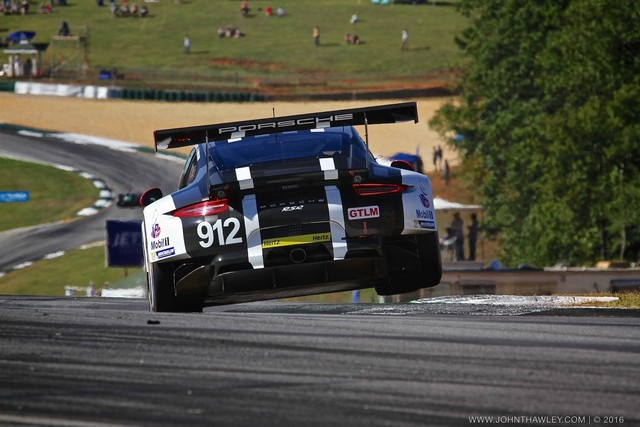 (John Thawley ~ Motorsports Photography @ www.johnthawley.com ~ 248.227.0110)
(John Thawley ~ Motorsports Photography @ www.johnthawley.com ~ 248.227.0110)
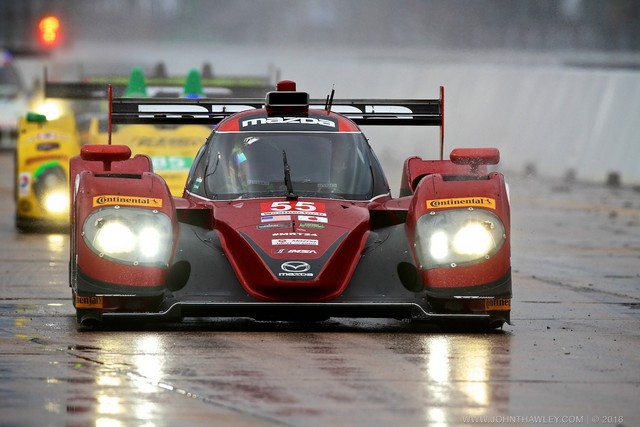 (John Thawley ~ Motorsports Photography @ www.johnthawley.com ~ 248.227.0110)
(John Thawley ~ Motorsports Photography @ www.johnthawley.com ~ 248.227.0110)
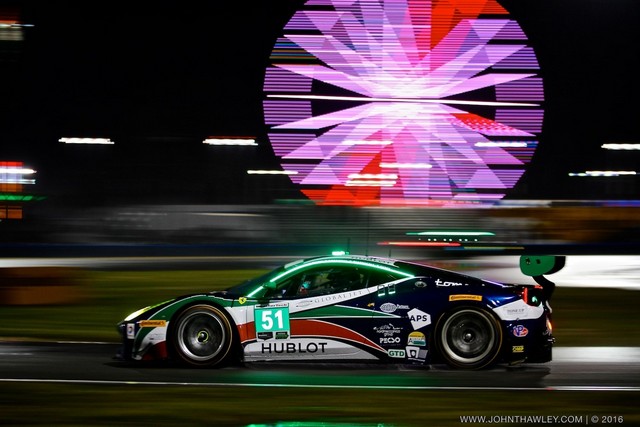 (John Thawley ~ Motorsports Photography @ www.johnthawley.com ~ 248.227.0110)
(John Thawley ~ Motorsports Photography @ www.johnthawley.com ~ 248.227.0110)
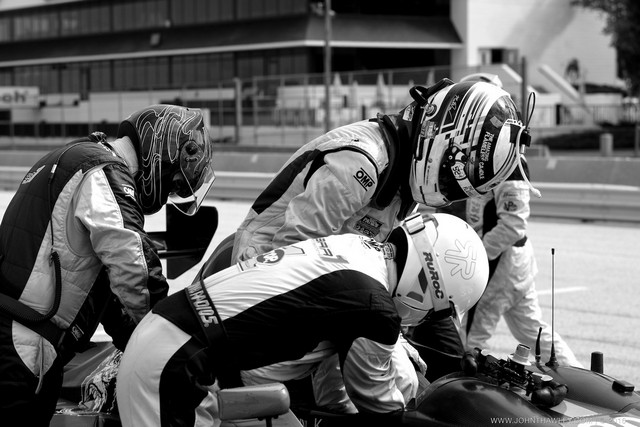 (John Thawley ~ Motorsports Photography @ www.johnthawley.com ~ 248.227.0110)
(John Thawley ~ Motorsports Photography @ www.johnthawley.com ~ 248.227.0110)
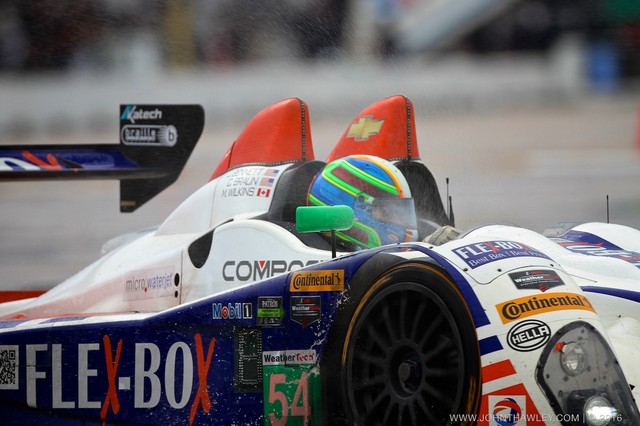 (John Thawley ~ Motorsports Photography @ www.johnthawley.com ~ 248.227.0110)
(John Thawley ~ Motorsports Photography @ www.johnthawley.com ~ 248.227.0110)
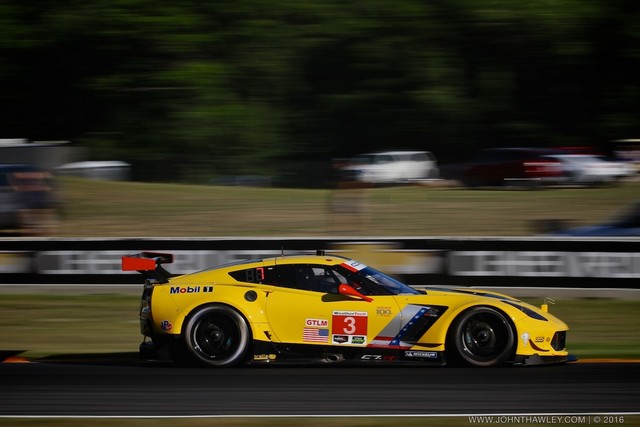 (John Thawley ~ Motorsports Photography @ www.johnthawley.com ~ 248.227.0110)
(John Thawley ~ Motorsports Photography @ www.johnthawley.com ~ 248.227.0110)
Editor's Note: Many of you have seen Peter's references over the years to the Hydrogen Electric Racing Federation (HERF), which he launched in 2007. For those of you who weren't following AE at the time, you can read two of HERF's press releases here and here. And for even more details (including a link to Peter's announcement speech), check out the HERF entry on Wikipedia here. -WG
Publisher's Note: As part of our continuing series celebrating the "Glory Days" of racing, we're proud to present another noteworthy image from the Ford Racing Archives. - PMD

(Courtesy of the Ford Racing Archives)
Daytona Beach, Florida, 1956. A children's race in 1956 Ford Thunderbird pedal cars was part of NASCAR's Daytona Beach Speed Week festivities that year.




